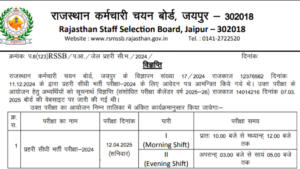Table of Contents
Krishi Sakhi Yojana is a significant program that aims to empower women and change the agricultural landscape. The program which translates to ‘agriculture friend’ highlights the critical role that women play in rural farming communities. With focused training access to contemporary farming methods and financial inclusion, the program seeks to improve rural women’s lives, increase their output, and promote sustainable development in India’s many agricultural zones.
The Krishi Sakhi Yojana strives to improve agricultural practices while also advancing gender equality and economic empowerment at the local level by providing women with resources and knowledge. Check the article for all the important information regarding Krishi Sakhi Yojana.
What is Krishi Sakhi Yojana?
Krishi Sakhi is a Community Agriculture Care Service Provider (CASP), which will allow last-mile coverage in rural areas where farm-based treatments are either too costly or unavailable for the impoverished to pay. The purpose of Krishi Sakhi is to raise consciousness and improve the community’s capability for agricultural operations making it easier to gather and market the agricultural output.
Krishi Sakhi is a Community Agriculture Care Service Provider (CASP) chosen by VO/CLF; they are not an employee of ASRLMS. The Krishi Sakhi model has been designed for livelihoods based on sustainable agriculture at the level of SHGs and households. The rural farmers would receive basic technical support and treatment from a pool of identified Krishi Sakhi.
Krishi Sakhis are chosen as agriculture para-extension workers because they are trusted community resource persons and experienced farmers themselves. Their deep roots in farming communities ensure they are welcomed and respected.
Krishi Sakhis will be established through ASRLMS-conducted structured training programs led by agriculture specialists. They will serve as a point of contact between the village level and the Krishi Vigyan Kendra (KVK), the Department of Agriculture, Extension Workers (VLEW), and rural impoverished individuals by connecting HHs with their agricultural endeavors.
Objectives of Krishi Sakhi Yojana
- Making agriculture-based livelihoods for the rural poor sustainable and profitable is the aim of this concept.
- Particular attention will be paid to extremely low-income households that lack or have restricted access to land and other production-related resources.
- It would create a powerful extension network of agricultural professionals who operate inside the community and report to local institutions.
- The concept would put a strong emphasis on activities related to agriculture to support the rural poor’s current means of subsistence.

Qualifications for Krishi Sakhi
- She must be a local and live in the same GP (a member of the women’s self-help group).
- At least eight years of education should be required for the Krishi Sakhi after passing, and she ought to be proficient in both the native and Assamese languages. She needs to be proficient in math. Higher educational credentials and proficiency in both writing and reading English, however, will be valued.
- She ought to be among the top practitioners in the field of producing crops.
- She must possess strong speaking and motivating abilities (articulation skills).
- She should be able to move freely and assist Producers by holding their hands.
- She must be open to participating in exposure programs and trainings conducted by Producer’s Group or Mission, both inside and outside the state.
- She ought to be able to organize any neighborhood awareness campaign.
- The Krishi Sakhi should be between the ages of 20 and 45.
Process of Selection of Krishi Sakhi
The Village Organization will educate the residents about Krishi Sakhi with the assistance of its livelihoods subcommittee. The Livelihoods Subcommittee will handle the Krishi Sakhi identification process at the VO/CLF level, with BPM/BC serving as the team facilitator.
- VO will arrange a meeting to identify Krishi Sakhi and the process of identification will be carried out by the livelihoods committee, the VO’s president, and the secretary.
- The meeting may be invited to the local Extension Officer for Agriculture (EOA) Agriculture Development Officer (ADO) or his representative.
- Based on an interview and written exam, the panel of members of the livelihoods subcommittee, in consultation with the BPM, the President/Secretary of the relevant VO / CLF, and the Agriculture Development Officer (ADO)/Extension Officer-Agriculture/his representative, will choose the Krishi Sakhi for the designated area.
- Currently, there will be one (1) Krishi Sakhi chosen out of every 50 Mahila Kishan. (Optimum two Krishna Sakhi per Voucher Unit; subject to change based on demand).
- Following the selection process, VO/CLF will email BMMU the detailed profile of the chosen Krishi Sakhi so that it may be recorded and uploaded into the MIS.
Which states are now the starting points for the Krishi Sakhi training program?
Phase I of the Krishi Sakhi Training Program has been implemented in the following 12 states: Odisha, Jharkhand, Andhra Pradesh, Gujarat, Tamil Nadu, Uttar Pradesh, Madhya Pradesh, Chhattisgarh, Karnataka, Maharashtra, Rajasthan, and Meghalaya.
For what purpose is Krishi Sakhis being trained?
Krishi Sakhis have already completed 56 days of training covering the following modules on a variety of extension services:
- Agro-ecological methods from clearing land to harvesting
- Setting up agricultural field schools
- Seed banks + Creation and Administration
- Techniques for maintaining soil health and preserving moisture
- Systems of Integrated Farming
- Livestock Management Fundamentals
- Creating bio inputs stores and utilizing and preparing bio inputs
- Fundamental abilities in communication
Roles and Responsibilities of Krishi Sakhi
- Training and capacity building for members of rural households is the main duty of Krishi Sakhi.
- To gather and update the data about land, annual rainfall, number of rainy days, cropping pattern, water availability, soil fertility, input use and varieties, irrigation source, household information, alternative income sources, social classes, educational attainment, land holding size about population size, household manufacturing and processing center, marketing, and infrastructure facilities for each farmer/producer member.
- Conduct field visits with individual farmers at various crop stages and offer technical assistance for cross-cultural operations.
- To run through several steps of the enhanced procedures.
- To make the yield assessment process easier.
- To guarantee the timely provision of agriculture inputs (both organic and inorganic, depending on necessity) for activities centered on agriculture from bespoke hiring centers at the local level.
- To make sure the Producer Group for Agriculture meets every month.
- To create an annual crop calendar for agricultural pursuits, such as horticulture pursuits, beekeeping pursuits, and home vegetable gardens.
- To make it easier for farmers from SHGs and CIF/VO of ASRLMS to receive the necessary loan support when needed.
- Make sure that horticulture and agriculture are covered by crop insurance.
- To offer direction for operations during and after harvest
- There should be a minimum of twenty visitation days and fifty houses to be contacted each month.
- All daily actions must be documented in the designated diary, and reports of the activities must be made periodically as needed by the BMMU/VO at this time (then to Producer Group Federations at the Cluster level).
- Any additional tasks that are now assigned periodically by the Producer Group/VO (and subsequently assigned to the Cluster level and Producer Group Federations).
Building capacity and exposing the Krishi Sakhi
- The Krishi Sakhi must receive sufficient training in agroecological techniques under farm-based agriculture, as well as in the control of pests and diseases on the farm.
- Figuring out the marketing connections to sell the agricultural products. When necessary, she will also work with line department resource people to plan training sessions for the stakeholders.
- To close the knowledge gap between rural farmers and agriculture specialists, they can provide the HHs with direct support on agricultural methods, and pest, and disease control.
- The resource people will conduct the Krishi Sakhi training in stages at different levels.
Monitoring and Assessment
- Krishi Sakhi’s work will be based on how many members are assisted with agricultural techniques.
- Every daily activity should be documented in the designated journal and signed by the producer group member she has helped.
- Before funds are released, VO must get a consolidated report on the job completed.
- VO will be in charge of keeping an eye on and assessing Krishi Sakhi’s work. Reporting of the actions should be done periodically as and when the VO currently requests (later to the Producer Group).
How does Krishi Sakhis support farmers through the MOVCDNER plan and make a living?
Thirty Krishi Sakhis are currently employed as Local Resource Persons (LRPs) under the MOVCDNER (Mission Organic Value Chain Development for North Eastern Region) plan. They visit each farm once a month to keep an eye on operations and comprehend the difficulties that the farmers confront. Every week, they also hold Farmer Interest Group (FIG) level meetings to educate farmers, connect with them, and learn about the difficulties they experience, as well as discuss FPO operations, marketing initiatives, and farmer diaries. For the aforementioned activities, they receive INR 4500 per month as a resource charge.




 Rajasthan Jail Prahari Admit Card 2025 a...
Rajasthan Jail Prahari Admit Card 2025 a...
 RPSC Agriculture Officer Admit Card 2025...
RPSC Agriculture Officer Admit Card 2025...
 Bihar Civil Court Clerk Mains Exam Date ...
Bihar Civil Court Clerk Mains Exam Date ...


 Adda247 Job portal has complete information about all Sarkari Jobs and Naukri Alerts, its latest recruitment notifications, from all state and national level jobs and their updates.
Adda247 Job portal has complete information about all Sarkari Jobs and Naukri Alerts, its latest recruitment notifications, from all state and national level jobs and their updates.